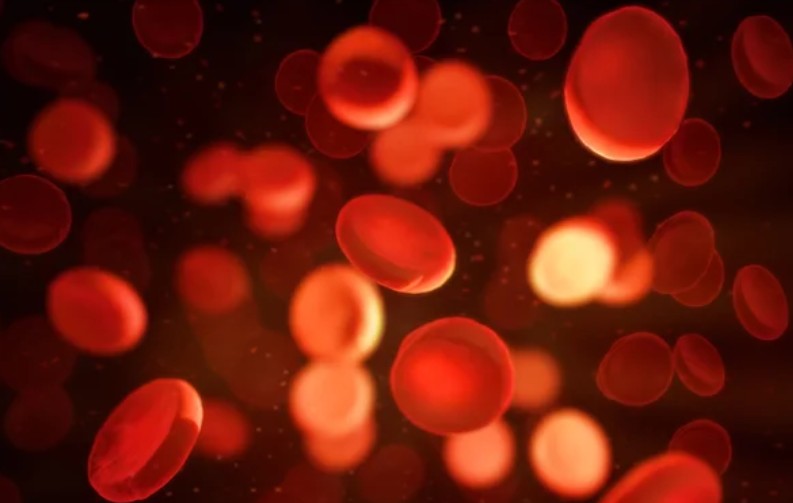 🏥 Health Information from the Field of Master Mind Articles (MMA) 📝
🏥 Health Information from the Field of Master Mind Articles (MMA) 📝
Shared from the research of: Joseph Mercado 👨
Content Contributor: Scientific American 📖
To: Article Lover 📄
Blog Post #1132 📌
Re: Oxygen Regeneration 💨
Date and Time: Saturday, February 20, 2020 at 5:56 p.m. ⏰
Dear Article Lover,
In the history of life on Earth, a few moments stand out.
The arrival of photosynthesis and sexual reproduction, maybe a few mass extinctions.
One development frequently overlooked is the evolution of aerobic metabolism—the use of oxygen to convert food into energy, which is fundamental for animal life.
In humans, all it takes is a quick jog to remember the importance of oxygen.
At the molecular level, the presence of oxygen is so vital to so many functions that our cells have adapted a finely tuned mechanism to regulate its concentration.
“Without that adaptive response, mammals would have had a hard time evolving to what we are now,” said Holger Eltzschig, MD, PhD, professor and chair of anesthesiology, surgery, and biochemistry at the University of Texas McGovern Medical School.
Yet for decades the precise workings were largely a mystery.
Scientists knew that in low oxygen situations, or hypoxia, cells trigger a cascade of physiological events to restore oxygen concentrations. The question was how.
In 2019, William Kaelin Jr., MD, from the Dana-Farber Cancer Institute and Harvard Medical School in Boston, Sir Peter Ratcliffe, MD, from the University of Oxford, and Gregg Semenza, MD, PhD, from the Johns Hopkins University School of Medicine, received the Nobel Prize in Physiology or Medicine for helping to answer that question.
Working largely independently, the scientists each detailed a portion of the hypoxia response.
It has been known for decades that abnormal oxygen delivery is a feature of many diseases, including heart attacks, strokes, cancer and anemia.
The work of this trio revealed, for the first time, the molecular circuit that allows us to sense and respond to changes in oxygen.
As is often the case, the work of the Nobel Prize winners is less a destination than a point of departure.
Researchers today are focused on translating that basic science into therapeutic potential.
“It turns out that this pathway can be targeted pharmacologically, which has huge biomedical implications,” Eltzschig says.
But to truly understand the scope of those implications first requires an understanding of the hypoxia response.
A brief history of hypoxia:
By the 1900s, scientists had clearly established that hypoxia correlated with a number of physiological events in humans, including anaerobic glucose metabolism; a boost in the hormone erythropoietin (EPO), which contributes to production of red blood cells; and the creation or generation of new blood vessels.
The first hint at the mechanism behind that correlation came from Semenza.
In 1992, he identified a protein complex he named the hypoxia-inducible factor (HIF).
A transcription factor, HIF regulates the expression of a number of genes and serves as a molecular switch, turning on or off the hypoxia response.
At normal oxygen concentrations, the presence of HIF is minimal; the cells’ proteasomes, often described as their garbage disposals, degrade a HIF subunit shortly after it appears.
When the environment turns hypoxic, however, HIF accumulates in the cell nucleus and begins to impact gene expression, flipping the switch to the hypoxia response.
Though that research offered a start, the relationship between oxygen concentration and the abundance of HIF remained unclear.
The next piece of the puzzle came from Kaelin, who had spent time researching von Hippel-Lindau (VHL) disease, a rare genetic disorder that increases cancer risk. Mutations in the responsible gene rob cells of a normal version of the VHL protein (pVHL).
Kaelin showed that cells with a defective version of pVHL behave as though starved of oxygen, whether oxygen is present or not. Seizing on this clue, Ratcliffe proceed to show that cells lacking pVHL, unlike normal cells, cannot destroy HIF when oxygen is present.
Both Kaelin and Ratcliffe then showed that the binding of pVHL to HIF results in the addition of a string of ubiquitin molecules to HIF, which serves as the signal for it be destroyed by the proteasome.
Although this revealed how pVHL marks HIF for degradation, how the interaction of the two was regulated by oxygen remained a mystery.
Soon after, Kaelin and Ratcliffe discovered that when oxygen is present, a chemical flag called a hydroxyl group gets attached to one or both of two specific prolyl residues (one of the 20 building blocks used to build proteins) on HIF.
This triggers the binding of pVHL to HIF and its subsequent degradation. When oxygen is in short supply, HIF goes unmodified and untagged for destruction.
The oxygen-sensitive enzymes that add the hydroxyl group to HIF, called the PHD prolyl hydroxylases, were then independently identified by Ratcliffe and Steven McKnight, PhD, at the University of Texas Southwestern Medical Center.
With the final step in HIF pathway established, scientists began to explore ways to utilize it.
Translating science into better understanding of diseases:
Because the hypoxia response is present across all tissues and cell types, the HIF pathway drives a series of downstream physiological events.
Scientists are now working to reverse-engineer those events and use them as a source for better understanding various diseases. M. Celeste Simon, PhD, is one.
The scientific director at the Abramson Family Cancer Research Institute at the University of Pennsylvania Perelman School of Medicine, Simon says the HIF pathway could hold potential in oncology.
“Tumors invariably become hypoxic,” she explains, “because the rapidly growing cancer cells outgrow the ability of existing vasculature to supply oxygen.”
In that circumstance, a normally functioning HIF pathway actually helps cancer cells survive their low-oxygen environment, and it encourages the formation of new blood vessels to feed the tumor.
Beyond cancer, understanding certain elements of the HIF pathway could permit researchers to study how to modify the body’s natural response to low oxygen in other diseases, such as anemia of chronic kidney disease (CKD), or during events such as heart attacks and surgeries.
In healthy individuals, kidneys are a primary site of EPO synthesis in adults (though not the only one).
In anemia of CKD, when the kidneys are damaged, the oxygen sensing pathway is impaired and our red blood cell supply may be damaged as a result.
According to the Centers for Disease Control, about 15 percent of American adults—or 37 million people—have chronic kidney disease.
And a review of 2007-2010 National Health and Nutrition Examination Survey Data found that the majority of U.S. adults with advanced CKD (stage 4 or 5) also suffer from anemia.
Simon says she’s eager to see what more researchers might uncover in coming years.
“Every cell in the body needs oxygen, and this is a transcription factor tasked with regulating thousands of genes,” she says.
“With high-throughput genetic screens and drug screens, we keep uncovering new things about the HIF pathway, and those discoveries will continue to bear fruit.”
Content Source: Scientific American

 Email Us a Message
Email Us a Message 

Please send us a personal message below and we will serve you momentarily.
We appreciate you visiting the MMU Global Research Directory
For more blog posts, videos, and to generate more knowledge, please free and…




 Fly Over to the MMU Facebook Page with Hoot
Fly Over to the MMU Facebook Page with Hoot 

 Visit the MMU Facebook Group Today
Visit the MMU Facebook Group Today 
 Claim Your Own 8GB I-CHIP Think Drive Here for Only $47
Claim Your Own 8GB I-CHIP Think Drive Here for Only $47 
 Get 15 Nuggets of Knowledge: (3) MP4’s
Get 15 Nuggets of Knowledge: (3) MP4’s  + (3) MP3’s
+ (3) MP3’s  + (3) PDF’s
+ (3) PDF’s  + (3) HTM’s
+ (3) HTM’s  + (3) TXT Files 📄
+ (3) TXT Files 📄